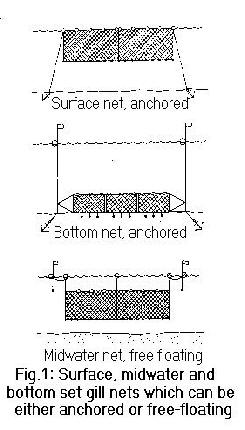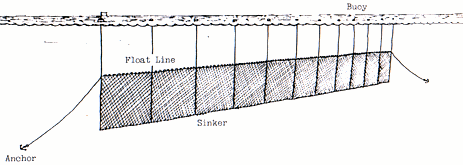|
Gill nets are used extensively in European waters.
Thousands of harbour porpoises, dolphins, whales, seals, turtles, sharks and seabirds die due to entanglement in these nets, each year.
They can be anchored or free-floating.
Free floating gill nets are referred to as
drift nets.
Their design is such that fish cannot detect
them. They make little “noise” and are almost
Undetectable in water. Fish swim into them
and are caught by their gills. Three types of
nylon filament are used for the mesh of gill nets
- monofilament, multifilament, and
multi-monofilament twine. Most fishermen prefer
the monofilament, as it is cheaper and most effective.
Monofilament gill nets are the most insidious, and are
responsible for the deaths of thousands of sea
creatures each year.
In terms of catching fish, gill nets are considered to be
a highly selective method of fishing, as the size of the
mesh determines the size and species of fish caught.
In terms of bycatch levels of cetaceans, seals, birds,
turtles, sharks and other non target species, they are
considered to be one of the most destructive fishing
methods, especially the bottom set / sink gill nets.
Gill nets comprise of a series of smaller panels which are joined together by means of bridles, in order to form one long net.
Each panel consists of a floatline which holds it taught in the water when balanced against the weight of the leadline and mesh. The floatline has a series of air filled chambers which are evenly spaced along the length on the net.
The leadline is a continuous length of rope weighted at regular intervals.
These two lines, the bridles and the knots at the corners of the mesh are considered to be the only parts of the gill nets from which an echolocating cetacean might receive a signal.
However, the signals from the floatline and knots are fairly weak, and the leadline is often buried in sediment. Thus the net does not appear to be an impenetrable barrier.
When the cetacean is echolocating, the net is only detectable at a distance which does not allow for avoidance, and the cetacean becomes entangled in the net and drowns.
There is also evidence to suggest that when cetaceans are feeding in familiar surroundings they do not use their sonar, thus making entanglement even more likely.
Further evidence suggests that cetaceans prefer to swim under an obstacle rather than over it. Therefore, if a cetacean becomes aware of the floatline, it will swim below it, straight into the net.
The overall length of gill nets can range from 1600 m to 13000 m. 10 000 km of net have been observed in the Danish gillnet fishery.
The heights of gill nets also vary. Floatlines can be 0.3 m to 5 m above the seabed.
|


